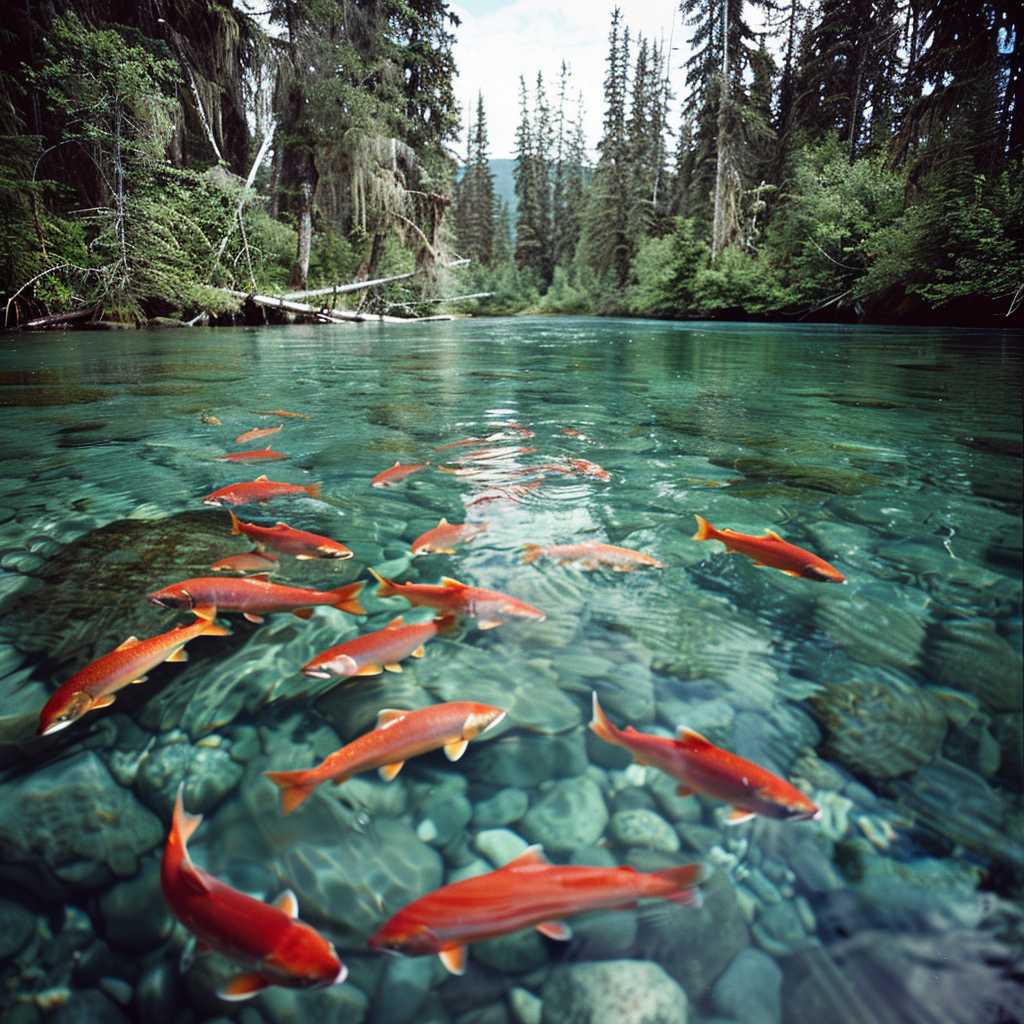The Comprehensive Guide to Understanding Salmon: Biology, Species, and Nutritional Value
Salmon is a well-known name representing several species of ray-finned fish in the family Salmonidae, which also includes trout, char, grayling, and whitefish. Revered for its taste, nutritional benefits, and cultural significance in various regions around the glaciers and cool waters of North America and the Northern Atlantic Ocean, salmon is both a popular food source and a critical component of aquatic ecosystems.
Biology and Life Cycle of Salmon
Salmon are anadromous, meaning they are born in fresh water, migrate to the ocean for adulthood, and return to their birthplace to spawn and reproduce. This homing instinct is a remarkable feature of their lifecycle. The salmon’s journey upstream combines innate odological senses and geomagnetic orientation — one of nature’s more extraordinary navigational feats.
Upon returning, females create nests known as ‘redds’ in which they lay eggs. After fertilization by the males, this new generation will start their lives, continuing a critical cycle vital to both ecological balance and commercial fisheries.
The physical characteristics of salmon vary during their lifespan. They experience significant morphological changes before spawning — often displaying brighter coloration and developing hooked jaws referred to as “kypes” in males.
Species Diversity and Distribution
Salmon are diverse—with each species having adapted to their unique habitats. The most commonly recognized species of salmon include:
–
Chinook or King Salmon : The largest species can be found primarily in the Pacific.
– Coho or Silver Salmon : Known for its silver sides and prefer colder waters.
– Sockeye or Red Salmon : Identified by its bright red flesh, smaller size, but rich taste.
– Pink or Humpy Salmon : Recognized by a humpback shape forming during spawning season.
– Atlantic Salmon : Found on the East Coast of North America and in European Waters.
–
Coho or Silver Salmon : Known for its silver sides and prefer colder waters.
– Sockeye or Red Salmon : Identified by its bright red flesh, smaller size, but rich taste.
– Pink or Humpy Salmon : Recognized by a humpback shape forming during spawning season.
– Atlantic Salmon : Found on the East Coast of North America and in European Waters.
–
Sockeye or Red Salmon : Identified by its bright red flesh, smaller size, but rich taste.
– Pink or Humpy Salmon : Recognized by a humpback shape forming during spawning season.
– Atlantic Salmon : Found on the East Coast of North America and in European Waters.
–
Pink or Humpy Salmon : Recognized by a humpback shape forming during spawning season.
– Atlantic Salmon : Found on the East Coast of North America and in European Waters.
–
Atlantic Salmon : Found on the East Coast of North America and in European Waters.
Each species has adapted life cycles with varying durations at sea before spawning back in freshwater habitats.
Conservation Efforts
Despite their broad adaptability, many salmon populations face threats from overfishing, habitat loss due to damming and development along waterways, climate change effects on water temperature and flows, and competition with non-native species.
Conservation efforts for salmon involve meticulous management of fishing practices, habitat restoration projects such as dam removals or modifications aiming to build fish ladders; along with research into breeding habits and genetic monitoring in an attempt to bolster wild populations.
International collaboration is also crucial since salmon migrate through vast oceanic territories that transcend national borders; hence cooperative strategies are needed for the conservation of these species.
Salmon’s Role in the Ecosystem
Salmon play a pivotal role in coastal ecosystems, linking marine and terrestrial biomes. When they die after spawning, their carcasses are a substantial nutrient source to stream communities — contributing to nutrient cycling that supports myriad organisms including birds, bears, and aquatic insects.
Their recreational and commercial significance is undeniable as well; it becomes increasingly essential to maintain balance within their natural environments by regulating human actions influencing their habits and survival rates.
Salmon as Food: Nutritional Value and Preparation
Due to high omega-3 fatty acid content, salmon are incredibly beneficial from a dietary perspective. Consumption of these healthy fats can support heart health, reduce inflammation and contribute to brain function. The fish is also a great source of protein, vitamins B12 and D, selenium, and potassium among other nutrients.
Cooking salmon can be an art with methods ranging from grilling, poaching to smoking — contributing to the variety of culinary traditions centering around this species globally.
Furthermore, the popularity of sushi has made raw preparations of salmon commonplace in many cultures; however it raises concerns regarding food safety which necessitates close attention to sourcing from trusted suppliers maintaining stringent handling standards.
Salmon in Culture
Salmon has deep cultural roots especially among Indigenous peoples in North America where it has been a sustenance staple for thousands of years. Festivals dedicating appreciation ceremonies highlight the integral part played by salmon within societal rites acknowledging Nature’s cycles where the importance extends beyond just nourishment into spiritual realms emblematic of life’s interconnectedness.
It has also shaped national cuisines leading up to inclusion in country emblems symbolizing purity due to their upstream battle mirroring ethical integrity challenge tales found across histories worldwide.
